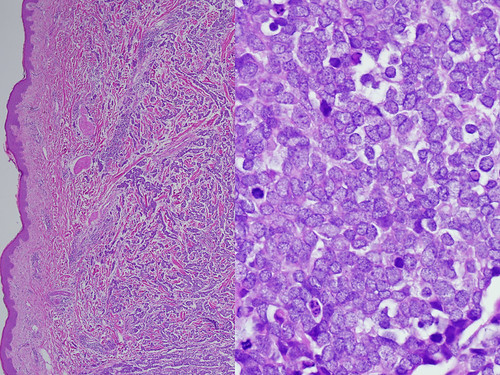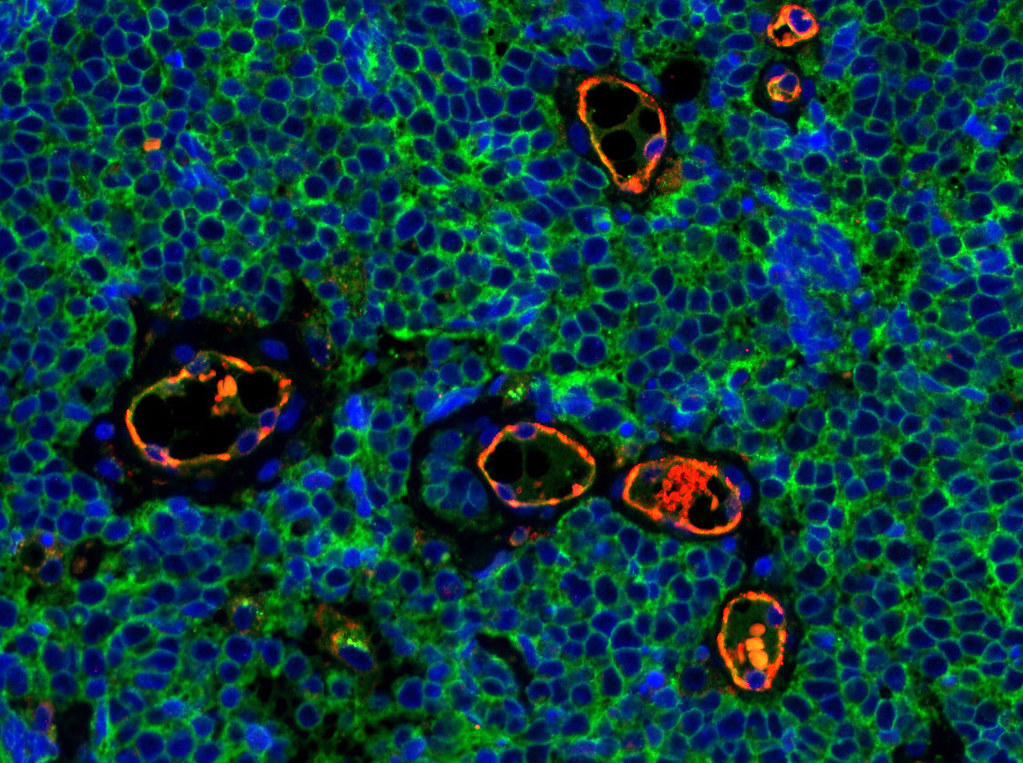Merkel Cell Carcinoma, often abbreviated as MCC, is a rare and aggressive form of skin cancer. It primarily affects the Merkel cells, which are located in the top layer of the skin near nerve endings and play a role in the sense of touch. This type of cancer is less common than other skin cancers like melanoma or basal cell carcinoma but is known for its rapid growth and potential to spread to other parts of the body if not treated early. In this article, we will explore the key aspects of this disease, including its symptoms, diagnosis, and treatment options.

Understanding Merkel Cell Carcinoma
Merkel Cell Carcinoma originates in the Merkel cells, which are found in the epidermis, the outermost layer of the skin. These cells are connected to nerve endings and help transmit the sensation of touch to the brain. While the exact cause of this cancer remains unclear, researchers believe that it may be linked to a combination of factors, including excessive exposure to ultraviolet light, a weakened immune system, and infection with a specific virus called the Merkel cell polyomavirus.
Risk Factors
- Exposure to Sunlight: Prolonged exposure to ultraviolet radiation from the sun or tanning beds increases the risk of developing this cancer.
- Age: Most cases occur in individuals over the age of 50, with the risk increasing significantly with age.
- Immune System Weakness: People with weakened immune systems, such as those with HIV/AIDS, organ transplant recipients, or individuals undergoing chemotherapy, are at higher risk.
- Fair Skin: Individuals with lighter skin tones are more susceptible to this type of cancer due to lower levels of protective melanin.
- Infection with Merkel Cell Polyomavirus: Although most people are exposed to this virus at some point in their lives, only a small percentage develop Merkel Cell Carcinoma.
Symptoms of Merkel Cell Carcinoma
The symptoms of Merkel Cell Carcinoma can be subtle and easily mistaken for other, less serious skin conditions. Early detection is crucial for effective treatment, so understanding the signs is essential.
Common Signs
- Rapidly Growing Lump: A firm, painless bump on the skin is often the first noticeable sign. The lump may appear red, blue, or purple and is typically found on sun-exposed areas such as the face, neck, or arms.
- Shiny Appearance: The affected area may have a shiny or pearly look, similar to other types of skin cancer.
- Ulceration: In some cases, the lump may break open and form an ulcer or sore.
- Enlarged Lymph Nodes: If the cancer has spread, nearby lymph nodes may become swollen or tender.
It is important to note that Merkel Cell Carcinoma often grows quickly and can spread to other parts of the body, such as the lymph nodes or distant organs, even before symptoms become apparent. This makes regular skin checks and prompt medical attention critical.
Diagnosing Merkel Cell Carcinoma
Diagnosing Merkel Cell Carcinoma involves a combination of physical examinations, imaging tests, and laboratory analyses. Due to its rarity and similarity to other skin conditions, accurate diagnosis can sometimes be challenging.
Physical Examination
A healthcare provider will begin by examining the suspicious area on the skin. They may ask about any changes in the size, shape, or color of the lesion, as well as whether it has caused discomfort or pain.
Biopsy
A biopsy is the most definitive way to diagnose this condition. During this procedure, a small sample of the affected tissue is removed and examined under a microscope by a pathologist. There are different types of biopsies, including:
- Punch Biopsy: A circular tool is used to remove a small core of tissue.
- Excisional Biopsy: The entire lump is surgically removed for analysis.
- Needle Biopsy: A thin needle is used to extract cells from the lump.
Additional Tests
If the biopsy confirms the presence of cancer, additional tests may be conducted to determine the extent of the disease and whether it has spread. These tests include:
- Imaging Studies: Techniques such as CT scans, MRI, or PET scans may be used to check for cancer in other parts of the body.
- Lymph Node Biopsy: A sentinel lymph node biopsy may be performed to see if the cancer has reached the lymph nodes.
Treatment Options for Merkel Cell Carcinoma
Treatment for Merkel Cell Carcinoma depends on several factors, including the stage of the cancer, its location, and the patient’s overall health. Since this type of cancer can grow and spread quickly, a multidisciplinary approach involving various specialists is often required.
Surgery
Surgical removal of the tumor is typically the first line of treatment. The goal is to remove the cancerous tissue along with a margin of healthy tissue to ensure all cancer cells are eliminated. Types of surgical procedures include:
- Wide Local Excision: The tumor and surrounding healthy tissue are removed.
- Mohs Surgery: A specialized technique where thin layers of cancerous tissue are removed and examined until no cancer cells remain.
Radiation Therapy
Radiation therapy uses high-energy beams to target and destroy cancer cells. It is often used after surgery to reduce the risk of recurrence or as the primary treatment if surgery is not an option. Radiation may also be recommended for tumors located in areas that are difficult to operate on, such as the face.
Chemotherapy
Chemotherapy involves the use of drugs to kill cancer cells. While it is less commonly used for early-stage Merkel Cell Carcinoma, it may be recommended if the cancer has spread to other parts of the body. Chemotherapy can be administered orally or intravenously and is often combined with other treatments.
Immunotherapy
Immunotherapy works by boosting the body’s immune system to fight cancer. Drugs known as immune checkpoint inhibitors have shown promise in treating advanced stages of this disease. These medications help the immune system recognize and attack cancer cells more effectively.
Targeted Therapy
Targeted therapy involves the use of drugs that specifically target certain characteristics of cancer cells, such as genetic mutations or proteins. While still under investigation for Merkel Cell Carcinoma, targeted therapies hold potential for personalized treatment approaches in the future.
Living with Merkel Cell Carcinoma
Receiving a diagnosis of Merkel Cell Carcinoma can be overwhelming, but advancements in treatment and supportive care offer hope to patients. Regular follow-up appointments are essential to monitor for recurrence or complications. Patients are encouraged to adopt sun-safe practices, maintain a healthy lifestyle, and seek emotional support from loved ones or professional counselors.
Preventive Measures
While it may not always be possible to prevent Merkel Cell Carcinoma, certain steps can reduce the risk:
- Avoid excessive exposure to sunlight, especially during peak hours.
- Wear protective clothing, hats, and sunglasses when outdoors.
- Use broad-spectrum sunscreen with an SPF of 30 or higher.
- Perform regular self-examinations of the skin to detect any unusual changes.
- Schedule annual skin checks with a dermatologist, particularly if you have risk factors.
Ongoing Research and Future Directions
Research into Merkel Cell Carcinoma is ongoing, with scientists exploring new ways to improve diagnosis and treatment. Clinical trials are investigating novel therapies, including combinations of immunotherapy and targeted treatments, to enhance outcomes for patients. Increased awareness and funding for research are vital to advancing our understanding of this rare but serious disease.





